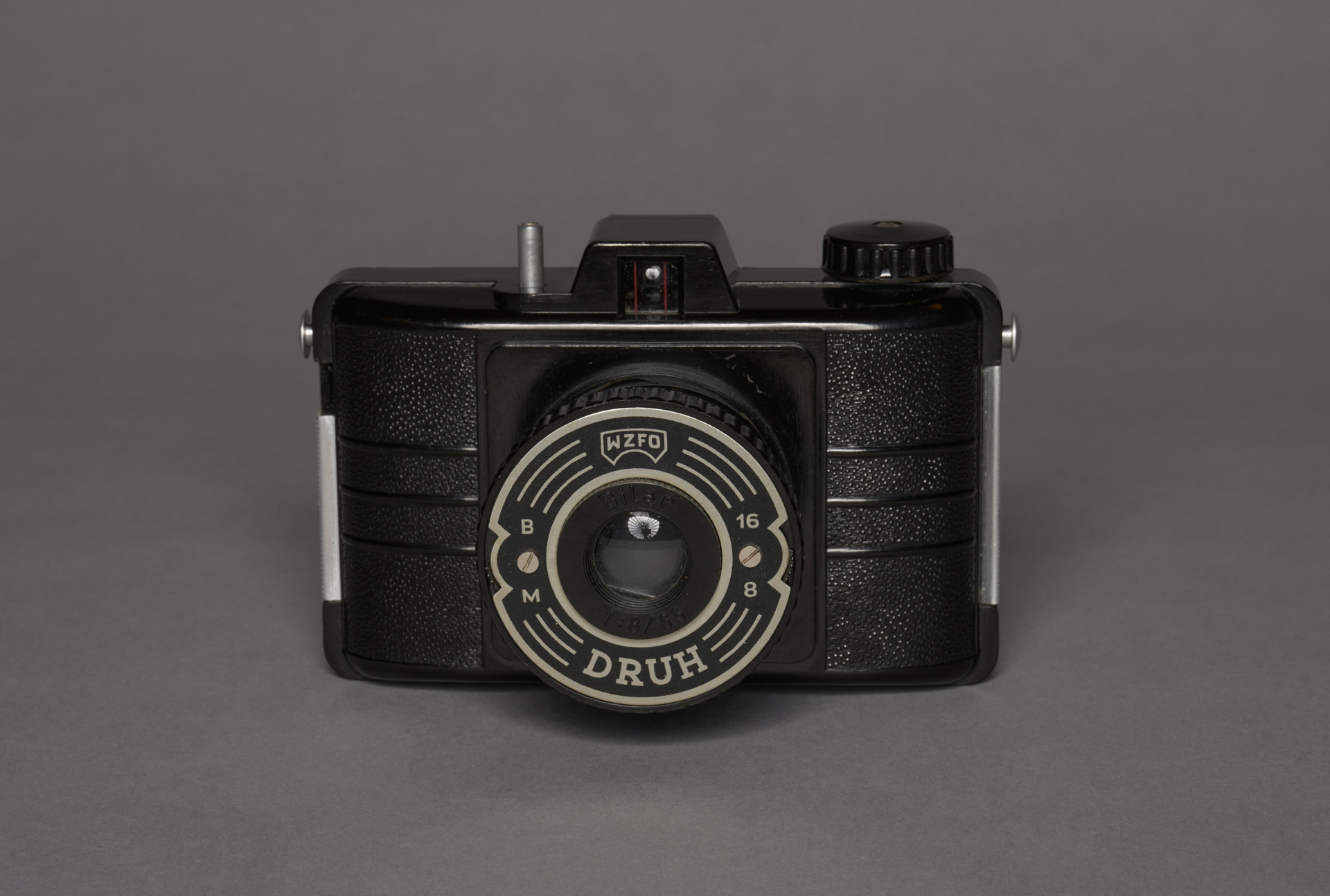
Druh still camera, model II
Warszawskie Zakłady Foto-Optyczne, Meisner Jan Krzysztof, Rutkowski, Olgierd,Creator
Warszawskie Zakłady Foto-Optyczne, Meisner Jan Krzysztof, Rutkowski, Olgierd
Time and place of creation
Place:
Poland
The purpose of a still camera is to record images of objects in space on light-sensitive materials: glass plates, light-sensitive film, or digitally. Its predecessor was the camera obscura (pinhole camera). The device uses the phenomenon of projecting an inverted image onto the opposite side of the box. Such a design was already known in ancient times. The modern photographic camera was invented in 1839 by French entrepreneurs the Susse brothers, whose device created photographs using the daguerreotype technique. The first small-frame photographic camera, the Leica Camera AG, was designed by Oskar Barnack in 1913, and launched on the market 12 years later. A twin-lens reflex camera was launched in 1929.
This box camera made of Bakelite is the simplest kind of photographic camera with a screw-in lens. In designing the device, the assumption was that the camera would be a cheap, small, and simple to use device for budding photo enthusiasts. Work on the prototype was completed in August 1955. The Druh camera was built following the model of the German Pouva Start camera, whose design was inspired by the pre-War French Photax II Blindé art déco-styled camera.
The camera has a simple, slide-out Bilar periscope-type lens with two identical, symmetrically placed 1:8 lenses with a focal length of 65 mm. On the left side of the lens there is a switch for diaphragms, i.e., moving metal sheets installed within the lens. As they change position, they adjust the opening through which light enters the camera. The number “8” on the camera means that the lens is fully open, while “16” means it is closed. On a sunny day, the user set the aperture to “8”, and “16” on a cloudy day. On the right side of the lens is a knob for setting the shutter to “M” 1/50 s, and a shutter speed knob marked with the letter “B”, indicating that the shutter remains open for as long as the camera button is pressed.
The Druh camera used the 120-type film with backing paper, with a width of 60 mm, on thick-spool rolls. It could be used to make twelve 6×6 cm, or sixteen 4.5×6 cm, photographs. It was also possible to make sixteen 6×4.5 cm photographs using special blinds. The camera housing was made of Bakelite. A screw-in lens allowed the device’s overall size to be reduced.
The camera was manufactured by the Warszawskie Zakłady Foto-Optyczne (WZFO) in 1955-1965. The enterprise continued the activities of Warszawskie Zakłady Kinotechniczne, established in 1951. In the late 1960s it became part of Polskie Zakłady Optyczne.
Interesting fact: millions of Poles began their adventure with photography using the Druh cameras. As many as 1,100,000 units were built.
Authors: Beata Krzaczyńska, Piotr Turowski
Druh still camera, model II
Warszawskie Zakłady Foto-Optyczne, Meisner Jan Krzysztof, Rutkowski, Olgierd,Creator
Warszawskie Zakłady Foto-Optyczne, Meisner Jan Krzysztof, Rutkowski, Olgierd
Time and place of creation
Place:
Poland











